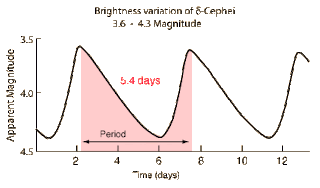How do we know the shape of our Galaxy?
An actual image of the Milky Way cannot be taken simply because we live inside of it and can not(at least for now) go outside of it to image it.
If you ever tour the countryside in Eastern or Mediterranean countries, you can see a diffused band of stars(an amazing sight). Galileo in the 17th century pointed a telescope towards a diffused band of Milky Way and saw different stars emitting light and moving across the sky. He showed that the Sun is not the center of the universe as was believed.
Now comes 18th century where two astronomers proposed that the structure of Milky Way was circular with stars going around the central region. They also theorized the idea that bright objects(which were then referred to as nebulas) we're another universe (it was believed that Milky Way was an infinitely big universe).
In 1785, William Herschel did the first attempt to map the Milky Way.
In the 19th century, using better telescopes astronomers further rectified William Herschel's map.
But the real excitement begins in the 1900s when telescopes have gotten way better.
Using previous models, Cepheid variables (stars which brighten and dim with a constant rate), and telescopes, astronomers calculated the diameter of our galaxy to be about 100,000 light-years(actual diameter=105,700 ly).

In the same year, Heber Curtis observed a nova in 'Andromeda Nebula' and calculated it's the distance to be roughly 500,000 light-years(actual distance=2.5 million ly) which clearly was beyond the diameter of Milky Way. It caused chaos in the community which was settled by Edwin Hubble in 1926 when he proved that Andromeda and other nebulas and indeed different galaxies and our universe was made of millions if not billions of these galaxies. Now, the question arose: what was the shape of these galaxies? So, more advanced telescopes were built and astronomers studied different objects like novas, globular star clusters, open star clusters, stars, dust and eventually found out the most likely shape of the Milky Way and most galaxies: spiral arms around a dense central region.
The number of those arms was then worked out by studying the emission spectra of molecular dust clouds in the Milky Way. It turned out then to be 2 but it wasn't confirmed. The debate over the number of arms still continues even today. In later years, astronomers agreed on 3 spiral arms but a study published in 2013 confirmed it to be 4 with an angle of pitch(angle of curvature from tangents) ranging from 7° to 25°.
A very recent study this year proposed that the Milky Way may actually be more like a warped and twisted disk. Using the data from the WISE survey, the astronomers behind this paper studied 1339 Cepheid Variable stars in our galaxy.
Instead of being a flat plane like disk it's warped
The stars don't follow the warped nature of the gas clouds. Even though most of the recent studies focused on making the map, not explaining it, the authors' leading hypothesis is that the outer disk is dragged along with, by Milky Way's inner disk of stars, which results in the flat plane of the galaxy being distorted
If you ever tour the countryside in Eastern or Mediterranean countries, you can see a diffused band of stars(an amazing sight). Galileo in the 17th century pointed a telescope towards a diffused band of Milky Way and saw different stars emitting light and moving across the sky. He showed that the Sun is not the center of the universe as was believed.
Now comes 18th century where two astronomers proposed that the structure of Milky Way was circular with stars going around the central region. They also theorized the idea that bright objects(which were then referred to as nebulas) we're another universe (it was believed that Milky Way was an infinitely big universe).
In 1785, William Herschel did the first attempt to map the Milky Way.
In the 19th century, using better telescopes astronomers further rectified William Herschel's map.
But the real excitement begins in the 1900s when telescopes have gotten way better.
Using previous models, Cepheid variables (stars which brighten and dim with a constant rate), and telescopes, astronomers calculated the diameter of our galaxy to be about 100,000 light-years(actual diameter=105,700 ly).

[Magnitude vs. time curve is constant of cepheid variables]
The number of those arms was then worked out by studying the emission spectra of molecular dust clouds in the Milky Way. It turned out then to be 2 but it wasn't confirmed. The debate over the number of arms still continues even today. In later years, astronomers agreed on 3 spiral arms but a study published in 2013 confirmed it to be 4 with an angle of pitch(angle of curvature from tangents) ranging from 7° to 25°.
A very recent study this year proposed that the Milky Way may actually be more like a warped and twisted disk. Using the data from the WISE survey, the astronomers behind this paper studied 1339 Cepheid Variable stars in our galaxy.
The stars don't follow the warped nature of the gas clouds. Even though most of the recent studies focused on making the map, not explaining it, the authors' leading hypothesis is that the outer disk is dragged along with, by Milky Way's inner disk of stars, which results in the flat plane of the galaxy being distorted
Related articles : https://proskillocity.blogspot.com/2020/08/is-vision-of-colony-on-mars-before-end_22.html


Very interesting, informative and well written article !
ReplyDeleteThank you !
Delete